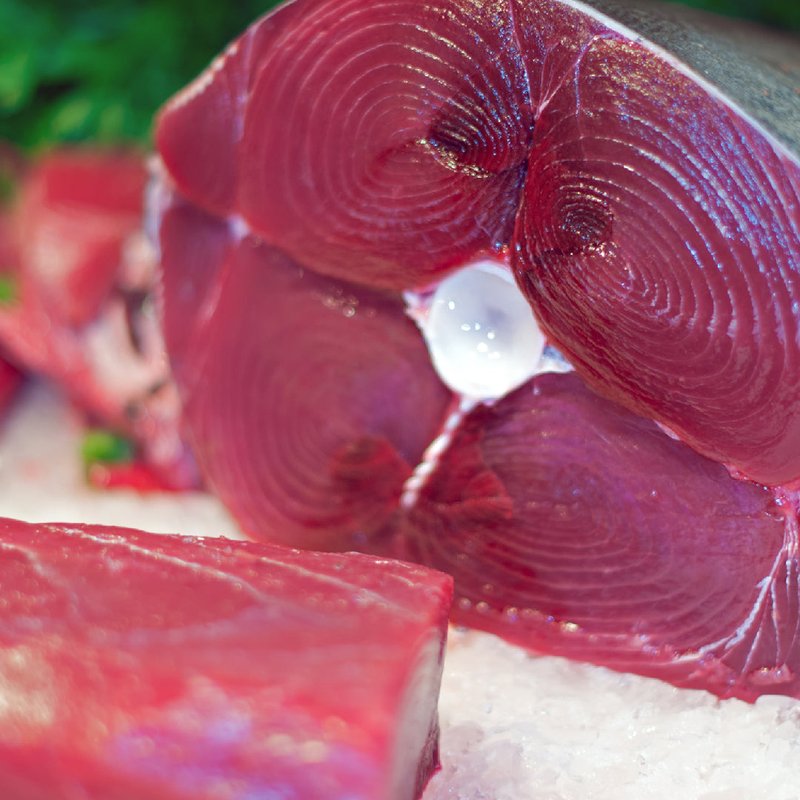
Let’s dive deeper into the world of tuna. From their impressive swimming speeds to their interesting social behaviors, there’s a lot to learn. So, grab a cup of coffee, and let’s explore 10 cool things about tuna that might surprise you!
1. Tuna Are Speed Demons
You might be surprised to learn that tuna are some of the fastest fish in the ocean. They can swim at speeds of up to 75 miles per hour! To put that into perspective, that’s faster than a cheetah. Their streamlined bodies and powerful tails allow them to cut through the water with ease. Just imagine being in a race where your competition is gliding effortlessly while you’re struggling to keep up!
This incredible speed isn’t just for show. Tuna use their agility to escape predators, catch prey, and travel vast distances in search of food. They can cover thousands of miles in a single migration, making them true nomads of the sea.
2. They’re Warm-Blooded
Here’s something you probably didn’t expect: tuna are warm-blooded! Most fish are cold-blooded, meaning their body temperature matches that of their environment. But tuna can regulate their body heat, allowing them to maintain a temperature higher than the surrounding water.
This trait is pretty remarkable. It lets them be more active and efficient hunters in colder waters. Think of it like wearing a warm jacket when it’s chilly outside. It keeps them agile and ready to chase after prey, no matter the temperature.
3. There Are Different Species of Tuna
You might know about bluefin and yellowfin tuna, but did you know there are actually several species? The most common species include:
- Bluefin Tuna: These are the largest and most sought-after, often used in sushi.
- Yellowfin Tuna: Known for its speed and flavor, it’s popular in many dishes.
- Skipjack Tuna: Smaller in size, it’s commonly found in canned tuna products.
- Bigeye Tuna: Prized for its rich flavor, it’s often used in gourmet dishes.
Each species has its own unique characteristics and habitats. For instance, while bluefin tuna are more often found in the Atlantic and Pacific Oceans, skipjack tuna tend to inhabit tropical waters. Understanding these differences can help you appreciate the diversity of tuna even more.
4. Tuna Can Live a Long Time
You might think tuna have a short lifespan because they’re fast swimmers, but many can live for decades. Some bluefin tuna, for example, can live up to 40 years! That’s quite a long time in a world where they’re constantly on the move.
Their long lifespan is partly due to their adaptability and migratory behavior. They can thrive in various environments, which helps them avoid potential threats. Just picture a wise old tuna, navigating through life’s challenges while keeping its skills sharp.
5. They Have Incredible Vision
Tuna are equipped with some amazing vision. They have large, well-developed eyes that help them see well in low-light conditions. This ability is crucial for spotting prey and avoiding predators, especially in the depths of the ocean where sunlight can’t reach.
What’s fascinating is that their eyes have a special layer of cells called the tapetum lucidum. This layer reflects light back through the retina, enhancing their night vision. In a way, it’s like having a built-in night-vision camera, allowing them to hunt effectively even when the sun goes down.
6. They Play a Role in Marine Ecosystems
Tuna aren’t just important for sushi lovers; they play a significant role in their ecosystems too. As top predators, they help maintain the balance of marine life. By preying on smaller fish, they regulate fish populations and contribute to the overall health of the ocean ecosystem.
You might be wondering why this matters. A healthy ocean supports diverse marine life, which is essential for the planet’s well-being. So, when you think about tuna, remember that they’re not just a meal; they’re vital players in their underwater world.
7. Tuna Have Unique Social Behaviors
Unlike many fish that prefer solitude, tuna are often found in schools. These schools can be quite large, with hundreds or even thousands of fish swimming together. This social behavior helps protect them from predators and allows them to hunt more efficiently as a team.
Picture a synchronized swimming team, all moving in harmony. That’s a bit like how tuna operate in schools. They communicate and coordinate their movements, making it easier for them to catch prey. It’s a fascinating example of teamwork in the animal kingdom!
8. Tuna Are Highly Valued in Fishing and Culture
Tuna are not only a popular food source but also hold significant cultural importance in many regions. The tuna fishing industry is a major economic driver, especially in coastal areas. For instance, in Japan, bluefin tuna are considered a delicacy and can fetch sky-high prices at sushi auctions.
This cultural reverence can lead to challenges, however, as overfishing has put some tuna species at risk. Understanding their value can help promote sustainable fishing practices, ensuring that future generations can enjoy this incredible fish.
9. They Can Regulate Their Swimming Speed
Tuna are masters of speed control. They can swim efficiently at various speeds depending on their needs. When chasing prey, they can kick into high gear. But when cruising along, they can slow down to conserve energy. It’s like having a sports car that can switch between racing on the highway and coasting through town.
This ability to adjust their speed plays a key role in their hunting strategies. They can sprint towards fast-moving prey or take it easy while traveling long distances—talk about versatile!
10. Conservation Efforts are Crucial
Given the importance of tuna in marine ecosystems and their value to humans, conservation is vital. Many tuna species are currently overfished, which threatens their populations and the balance of ocean life. Organizations and governments are working hard to create sustainable fishing practices and protect these incredible fish.
But what can you do? Supporting sustainable seafood choices can help. Look for labels that indicate responsible fishing practices when you buy tuna. Every small action counts when it comes to protecting these magnificent creatures and their habitats.
In conclusion, tuna are truly remarkable fish with so many fascinating traits. From their impressive speeds to their crucial role in the ocean ecosystem, they’re more than just a meal on your plate—they’re a wonder of the natural world. So, the next time you enjoy tuna, remember the incredible life it leads beneath the waves!

